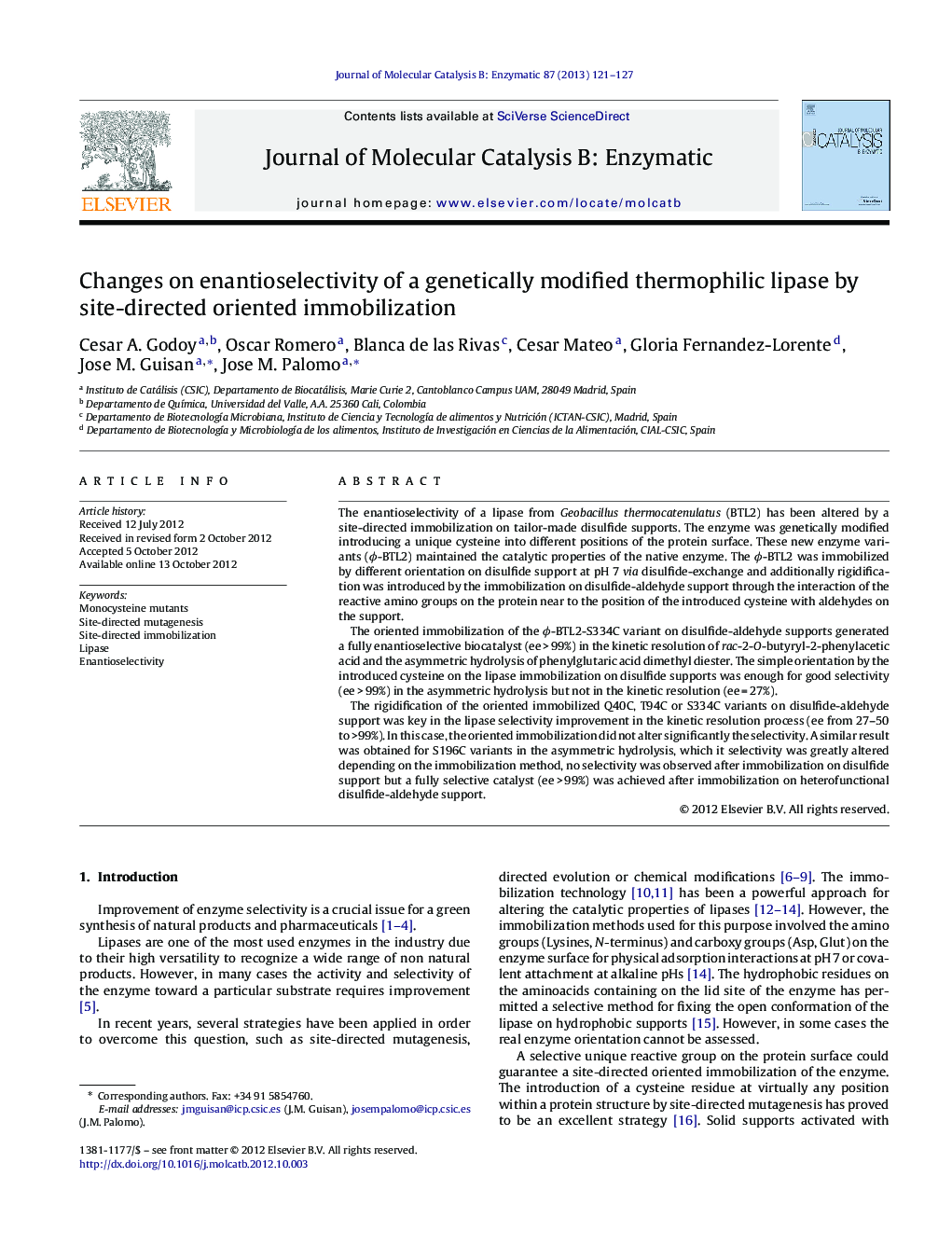| Article ID | Journal | Published Year | Pages | File Type |
|---|---|---|---|---|
| 70161 | Journal of Molecular Catalysis B: Enzymatic | 2013 | 7 Pages |
The enantioselectivity of a lipase from Geobacillus thermocatenulatus (BTL2) has been altered by a site-directed immobilization on tailor-made disulfide supports. The enzyme was genetically modified introducing a unique cysteine into different positions of the protein surface. These new enzyme variants (ϕ-BTL2) maintained the catalytic properties of the native enzyme. The ϕ-BTL2 was immobilized by different orientation on disulfide support at pH 7 via disulfide-exchange and additionally rigidification was introduced by the immobilization on disulfide-aldehyde support through the interaction of the reactive amino groups on the protein near to the position of the introduced cysteine with aldehydes on the support.The oriented immobilization of the ϕ-BTL2-S334C variant on disulfide-aldehyde supports generated a fully enantioselective biocatalyst (ee > 99%) in the kinetic resolution of rac-2-O-butyryl-2-phenylacetic acid and the asymmetric hydrolysis of phenylglutaric acid dimethyl diester. The simple orientation by the introduced cysteine on the lipase immobilization on disulfide supports was enough for good selectivity (ee > 99%) in the asymmetric hydrolysis but not in the kinetic resolution (ee = 27%).The rigidification of the oriented immobilized Q40C, T94C or S334C variants on disulfide-aldehyde support was key in the lipase selectivity improvement in the kinetic resolution process (ee from 27–50 to >99%). In this case, the oriented immobilization did not alter significantly the selectivity. A similar result was obtained for S196C variants in the asymmetric hydrolysis, which it selectivity was greatly altered depending on the immobilization method, no selectivity was observed after immobilization on disulfide support but a fully selective catalyst (ee > 99%) was achieved after immobilization on heterofunctional disulfide-aldehyde support.
Graphical abstractFigure optionsDownload full-size imageDownload as PowerPoint slideHighlights► The cysteine introduction did not affect to the enzyme catalytic properties. ► An oriented immobilization of seven different monocysteine mutated variants on two tailor-made disulfide supports has been described. ► A specific rational strategy for selectivity improvements of this lipase was developed. ► Improvement of enantioselectivity on two different biotransformations (from ee value 1 to >99%) was achieved by this strategy.
